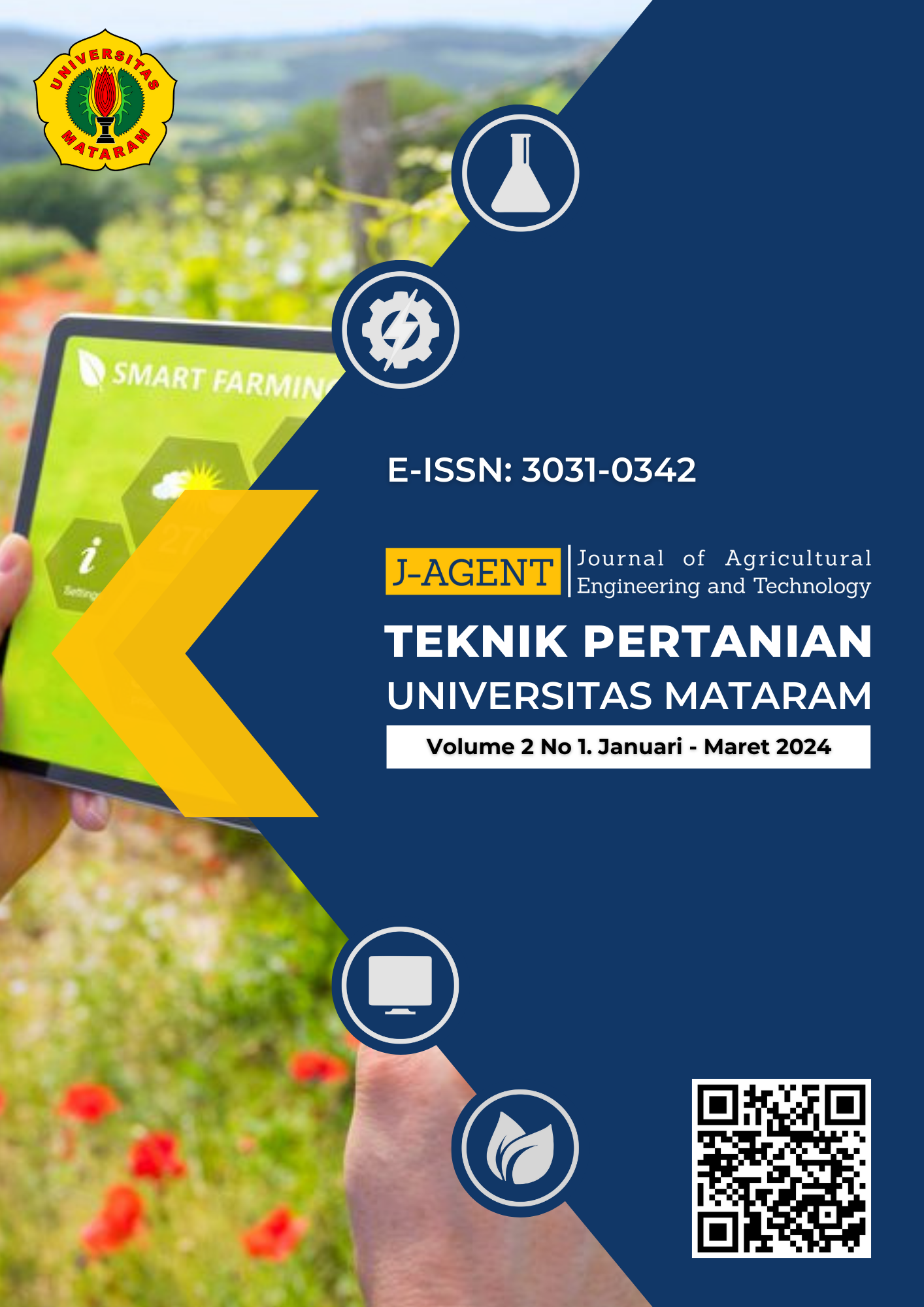Application of Aeroponics Techniques on The Growth of Spinach (Amaranthus sp)
Keywords:
aeroponic, growth media, nozzleAbstract
Aeroponics is a method of farming that uses air to spray nutrient solutions on the roots of plants.
This study was to determine the performance, and productivity of the application of aeroponic
techniques. This study used an experimental method with three aeroponic installations, and types
of rockwool, cocopeat, and husk charcoal growth media, and nozzle sizes 0.1 mm, 0.4 mm, and
0.6 mm. Spraying time in the morning - afternoon is 30 minutes on, and 30 minutes off, while at
night, it is 15 minutes on, and 45 minutes off. Parameters observed were pump, and nozzle
discharge, nozzle outpouring uniformity value, electrical conductivity (EC), acidity (pH), solution
temperature, ambient temperature, plant water consumption, air humidity, light intensity, plant
growth, and plant productivity. The results of the observations were analyzed using statistical
analysis, and two-factor ANOVA testing. The results showed that the range of pump discharge
values was 3.58 ml/second – 3.676 ml/second, and nozzle discharge values of 0.1 mm, 0.4 mm,
and 0.6 mm were 0.303 ml/second, 0.975 ml/second, and 1.225 ml/second. The good uniformity
of nozzle outpouring is 0.1 mm (97.17%) nozzle. The value (EC) during the growth period was
1.0 mS/cm – 2.5 mS/cm, the result of measurement of acidity (pH) was 5.7 – 7.5. The temperature
of the nutrient solution is 26℃ - 37℃ while the ambient temperature reaches 27℃ - 39℃. The
highest plant water consumption is 11.32 liters, and the humidity reaches 40% - 86%. The highest
light intensity occurs outside the greenhouse. The results of the ANOVA test on the size of the
nozzle, and the growth media affect plant growth and productivity. 0.1 mm nozzle has optimal
spraying, and good growth media are husk charcoal, and rockwool.


